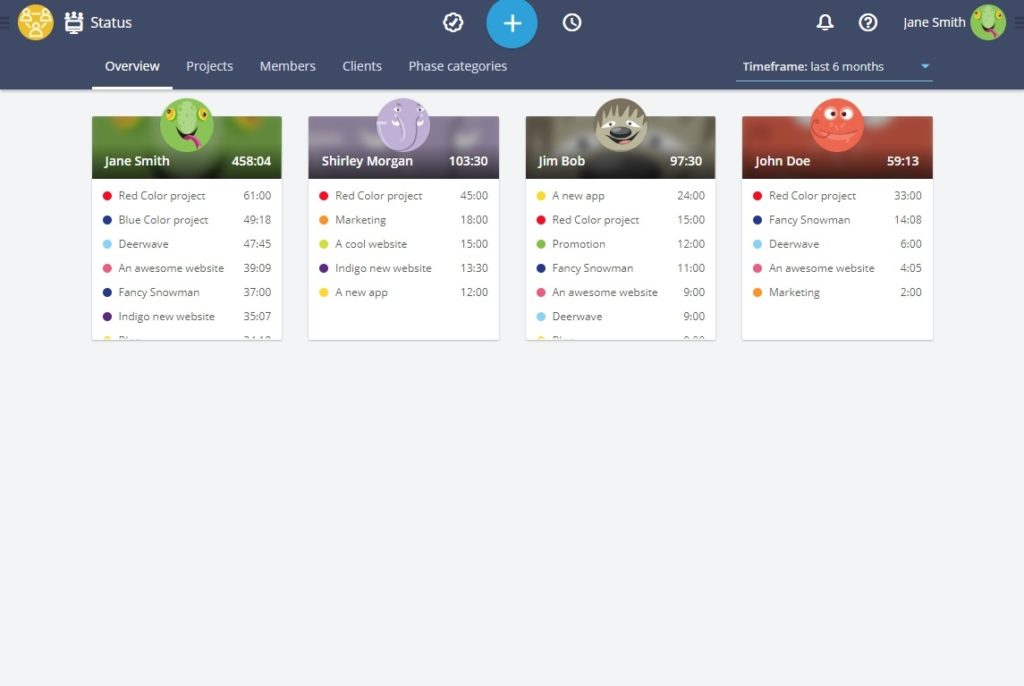Small teams need to get stuff done, too.
Despite the evidence showing that teams work better when small (think about Jeff Bezos’ “Two pizza rule”), small numbers are not always a guarantee of efficiency.
Take small businesses and startups, for example, who have a lot of bigger competitors to face. Small organizations often have to make do with the little resources at hand, while keeping a close eye on where money is going. At the same time, managers have to organize the workload to avoid burnout and keep motivation up.
Here at Timeneye we’ve always managed with our small team of 4. Here’s what we learned in the process – and how you, too, can make your small team more effective and happy.
Productivity tips for small teams:
- Carefully prioritize tasks;
- Never overschedule;
- Manage time (and track it);
- Be clear about project scope and expectations;
- Set attainable goals;
- Make a habit of writing everything down;
- Leave time for “other” tasks.
#1 Carefully prioritize tasks
When working with a little staff on many projects, it’s important to establish clear priorities. This will prevent people working on the wrong tasks, which could derail their productivity and waste their time.
Small businesses and start-ups often have team members wearing many hats and taking care of multiple responsibilities at the same time. This is why it’s crucial to determine what’s important, urgent, and what is not.
#2 Never over-schedule
To maximize time and resources, it’s hard to resist the temptation of cramming every to-do in every possible slot available. Not to mention small businesses might usually be understaffed, but things have to be done anyway.
Unfortunately, a full schedule leaves no time left to deal with emergencies. Also, people have a tendency to underestimate how much time it takes to complete a task. It’s a bug in the human brain called “Planning fallacy”.
Just to be sure, always leave some buffer time between tasks and be mindful of your team’s workload. If this means pushing some deadline forward, so be it. I know some small businesses take pride in their fast work delivery, but I’ll be much better, in the long run, to dilute work (or, if necessary, outsource some tasks).
#3 Manage time (and track it)
Speaking of time management: do you know where your team’s time goes? To have an accurate outlook of where the hours really go, it’s important to use a time tracking tool. Tracking time is usually associated with the boring, and dreaded practice of filling timesheets.
Using a time tracking software, like Timeneye, is actually more useful than a simple hour count: it makes you see how hours have been distributed. Hours budget tracking is also a common feature in many time tracking tools, that helps managers know how the budgeted hours are being used, and whether there’s a risk of running into delays or extra costs.

The
Team status view inside Timeneye, with the time tracked for every team member
#4 Be clear about scope and expectations
The first step to prevent projects from going overboard is to be clear about the project’s goals and requirements. This should be done firstly with the client, to make sure they understand exactly what the contract is about, what’s included, and what is not. Secondly, team members who will work on the project should know every detail they need without having to chase managers around, and avoid running into nasty surprises.
#5 Set attainable goals
This is the natural consequence of # 4. Even with the best internal time management, a small team with limited resources cannot possibly reach the project’s goals, if those goals are unrealistic. There are many goals setting frameworks, the most popular being the SMART goals (Specific, Measurable, Achievable, Relevant, Time-bound) method.
Setting achievable goals is important because if your team is shooting for the impossible, this could jeopardize their success and take their motivation down.
#6 Make a habit of writing everything
Working in a limited group makes communication easier, as there are no hierarchies and complex processes to go through. Nevertheless, managers and workers alike shouldn’t make the mistake of relying on memory alone.
It’s true that closely working with someone cuts unnecessary communication.
Despite that, make sure you write down project requirements, specifications, and processes and store everything safe somewhere (using Dropbox, or Google Drive or similar). Important stuff won’t get lost, and team members will be able to access the documentation anytime.
#7 Leave time for “other” tasks
Finally, don’t forget to leave some time on your team’s schedule (see #2) for self-development and learning. Obviously, it should not distract workers from their jobs, but giving your team some time for self-development will keep their motivation up and help them discover a new skill, that they can bring to the company and that could be useful within the organization.
Here at Timeneye, for example, we have a monthly amount of hours that we can spend learning a new skill, testing new apps and tools, and so on.
By encouraging a productive and positive environment, even the smallest team can achieve the biggest goals.
Enjoyed this article? Share it with one of your team members who might like it. If your team is scaling up, you might want to check this list of essential tools growing teams use to optimize their work.